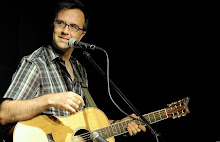When Taylor Guitars, a company known for revolutionizing the guitar industry by popularizing computer-assisted guitar design and construction for high-end acoustics, goes back to a pre-war design, you know that you're looking at a genuine retro trend. I would argue that the interest in outmoded acoustic guitar designs has its roots in the parlour guitar rage of a few years back, when companies like Larrivee and Martin introduced successful updates of the little ladies' guitar of the turn of the (twentieth) century.
From Taylor's website, on their use of computer-assisted manufacture:
CAD/CAM: CAD is an acronym for the "computer-aided design" software used in art, architecture, engineering, and manufacturing to assist in precision drawing. CAM stands for computer-assisted manufacturing. At Taylor, both come into play in a big way. We use CAD, and specifically 3D geometry graphic software, to design just about everything we need, including the guitars. All computer-numerically-controlled (CNC) Fadal fixtures, shaper jigs, side benders, body molds, inlay patterns, and every part of the guitar (especially the neck and neck pocket) are drawn in the computer using some type of 3D graphics program.
After the geometry is drawn, CAM toolpath programs are written to actually carve, cut, and shape the parts, using CNC machinery that includes the Fadals, lasers, and NC routers. Even our factory layouts are drawn in the computer. At any given time, seven or eight Taylor specialists are using CAD/CAM technology.
Now Bob Taylor discovers the superiority of 12-fret guitars (it only took until 2009!), but only after his own company produced one. I've preferred that design since I played my first Gibson L-OO at the late Dan Achen's house of vintage guitars. I couldn't afford the L-OO and eventually found an early 1930s Kel Kroyden (one of the depression-era off-brands manufactured by Gibson) and now play a Larrivee SD-50. When the body joins the next at the twelfth fret instead of the fourteenth, the shape of the soundbox is altered in a way that seems to allow more warmth and sustain. I'm not quite sure how it works acoustically, but the difference is definitely there.
If I sound skeptical about Taylor's 12-fret guitar it's because I am - I've never been much of fan of Taylor's guitars. I've played a few in stores and as backline on the road. They're fine amplified, and sit nicely in the mix with a loud rock band, but I always find them acoustically disappointing - lacking in midrange and low in volume at the higher frets. I'd love to have my mind changed though. Consistency in manufacturing could potentially be a wonderful thing, if there was only a reproducible design worth being consistent with!













No comments:
Post a Comment